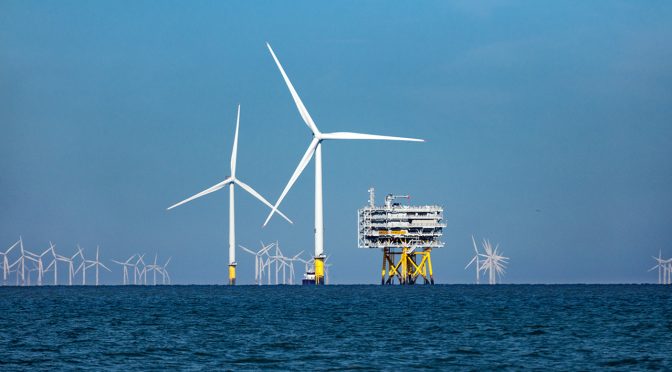Artificial intelligence (AI) is revolutionizing various industries, and the renewable energy sector is no exception. As the world increasingly turns to clean energy sources to combat climate change and reduce dependence on fossil fuels, offshore wind energy has emerged as a promising solution. Offshore wind farms have the potential to generate vast amounts of clean electricity, but they also face unique challenges in terms of installation, maintenance, and optimization. This is where AI comes into play, offering innovative solutions to unlock the full potential of offshore wind energy.
One of the primary challenges in offshore wind energy is the installation and maintenance of wind turbines in harsh marine environments. These environments can be unpredictable, with strong winds, high waves, and corrosive saltwater posing significant risks to both human workers and equipment. AI can help mitigate these risks by enabling better decision-making and more efficient operations. For example, AI-powered weather forecasting models can provide accurate predictions of wind and wave conditions, allowing operators to schedule maintenance activities during periods of calm weather, minimizing downtime and reducing the risk of accidents.
In addition to improving safety and efficiency, AI can also play a crucial role in optimizing the performance of offshore wind farms. Wind turbines are complex machines with numerous components that need to function optimally to generate electricity efficiently. AI algorithms can analyze vast amounts of data from sensors installed on turbines, such as wind speed, temperature, and vibration, to identify patterns and anomalies that may indicate potential issues. By detecting these issues early, operators can address them before they escalate into more significant problems, reducing the need for costly repairs and prolonging the lifespan of the turbines.
Moreover, AI can help optimize the layout and design of offshore wind farms to maximize energy production. Traditionally, engineers have relied on trial and error and manual calculations to determine the optimal placement of turbines within a wind farm. However, this process can be time-consuming and may not always yield the best results. AI algorithms can analyze factors such as wind speed, direction, and turbulence to determine the most efficient arrangement of turbines, taking into account the wake effect – the phenomenon where the wind passing through one turbine reduces the wind speed available for the turbines downstream. By optimizing the layout of wind farms, AI can help increase the overall energy output and reduce the cost of electricity generated.
Furthermore, AI can also play a role in integrating offshore wind energy into the power grid more effectively. As the proportion of electricity generated from renewable sources increases, grid operators face the challenge of managing the variability and intermittency of these sources. AI can help balance supply and demand by predicting fluctuations in wind energy production and adjusting the output of other power plants accordingly. This can help maintain grid stability and ensure a reliable supply of electricity to consumers.
In conclusion, artificial intelligence holds the key to unlocking the full potential of offshore wind energy. By improving safety and efficiency in installation and maintenance, optimizing turbine performance and wind farm design, and facilitating better integration with the power grid, AI can help overcome the unique challenges faced by the offshore wind industry. As the world continues to transition towards a more sustainable energy future, embracing AI-driven solutions will be crucial in harnessing the power of offshore wind and making it a cornerstone of our clean energy mix.


